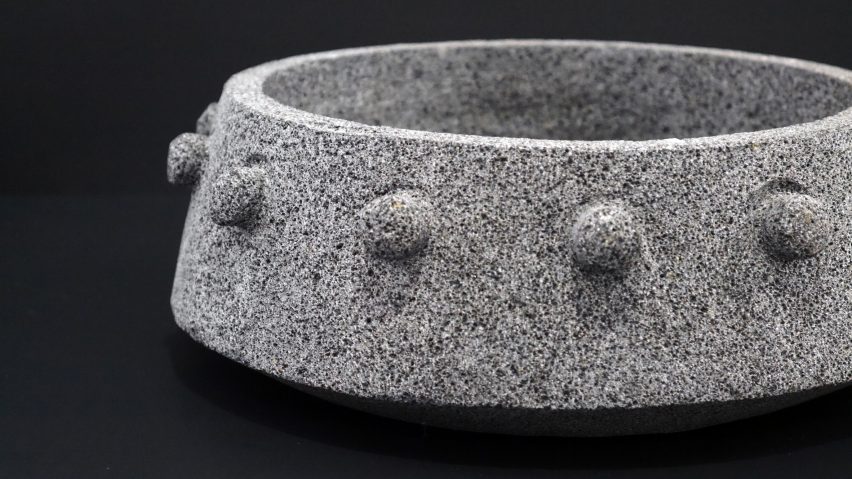Emerging designers from across Mexico and Latin America showcased new products at this year's Inédito exhibition, held at Museo Tamayo during Design Week Mexico this month. We've chosen our picks of the bunch.
Galería Mexicana de Diseño + C37
Galería Mexicana de Diseño and C37 worked together to find a use for a new type of "liquid stone" called Magma 04. To show how it can be formed into complex curves, they created a mould for a vase with a shapely silhouette, and presented the pots in a range of colours to also demonstrate the material's diversity.
Xavier Loránd
Xavier Loránd used a material comprising wood chips held in resin to create his designs. He moulded the composite into a dining chair with a backrest and arms that curve at their corners, and a block that supports a brass-topped table.
Ad Hoc + Wentz
Mexican studio Ad Hoc collaborated with Brazilian designer Guilherme Wentz on a pair of freestanding mirrors. The circular and elliptical reflective surfaces are interrupted at their bottoms with metal coverings, which fold out to form small shelves. Both slot into tapered concrete bases, coloured light pink and mid grey to match the metals.
Ayres
Volcanic stone was hand-carved to create a series of vessels, designed by Mexico-based Ayres. The porous lava rock is shaped into cylindrical pots of various heights and widths, with decorative bands of protrusions evoking ancient Mexican artefacts.
Mario Leal
Influenced by the Olympic Games, Mario Leal designed a bicycle with a curvaceous frame, without an element connecting the gear cogs and the handlebar support. The black and exposed-metal body is contrasted with turquoise tires.
Cors
Founded by designer Rebeca Cors, the studio presented a set of balancing pendant lamps hung from brass fixtures. The translucent globe-shaped shades are counterweighted with stripy blocks of marble, to hang perfectly vertical or horizontal when suspended from the ceiling.
Foam
Noticing a trend for terrazzo furniture, design studio Foam reinterpreted the hard material's speckled surfaces with soft sponges. They used the original to form table tops and shelves for metal-framed furniture, while the squishy alternative creates a matching cushion for a circular seat.

